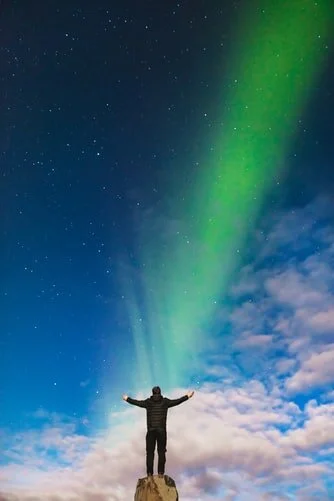The Bright Side of Travel: How Tourism Has Helped Save Local Environments and Economies
The Aurora Borealis seen in Iceland.
There’s a definite dark side to travel. You just have to look at Venice, Easter Island, and the Galapagos Islands to see real world examples of how local environments and economies have been negatively impacted by tourism. From bringing in invasive species to vacationers behaving badly (and in some cases illegally), travel can seriously hurt a tourist destination.
But that doesn’t have to be the only narrative. Sustainable travel is becoming more prominent as we plan our vacations, and there are examples of tourism having a positive impact on local ecosystems and cultures. Before you set off on your next adventure, look into whether your presence will help or hinder that destination. Here are 3 times tourism helped save local environments and economies.
1. Iceland
One of the best ways to increase your positive impact on a destination is to travel a little off the beaten path. In this way, you aren’t contributing to overcrowding, and you’re supporting businesses that rely on outsiders to turn a profit.
Iceland was once considered an “off the beaten path” destination. Tourism accounted for only 2% of their GDP in the late 90s. During the financial crisis of 2008, the Department of Tourism sought to make Iceland a world-class tourist destination to help bring in much needed cash.
Tourism steadily increased over the next decade, peaking at two million international visitors in 2019. Tourism is now responsible for up to 10% of the GDP yearly, and nine out of ten Icelanders believe that this increase has been good for the nation’s economy.
There are always drawbacks, including over crowded streets, higher house prices, and concerns that the natural habitat may become damaged. But with a strong economy, Iceland is prepared to tackle these issues head on. The country plays a major role in cleaning ocean pollution, and they were listed by the Environmental Performance Index as one of the top 20 Greenest Countries on Earth.
2. Costa Rica
Costa Rica is the embodiment of an ecotourism location, and how a country can use tourism to their advantage to save a local ecosystem. They leverage their tourism industry, and the money it generates, to protect the very same natural resources and landmarks that draw people to the country.
Over 75% of Costa Rica was once covered in rainforests. By 1987, there are estimates that over a third of that forest had been destroyed due to crops and livestock. The government decided on drastic and sweeping measures to protect the natural resources before they were completely destroyed.
Today, while the rest of the world struggles with deforestation, Costa Rica actually has increased the size of their rainforests to 60% coverage. They are rewarding farmers and foresters who follow sustainable practices, and educating new generations of landowners. And a lot of the funding for those programs comes from the $4 billion in tourism revenue that the country experienced in 2019.
When heading to Costa Rica, you can expect lots of opportunities to learn about (and volunteer with) groups that promote conservation, affordable health care, and education.
3. Cathedral Grove
The oldest trees in Canada can be found in Cathedral Grove, in Vancouver Island, British Columbia – and they were saved as a direct result of tourism.
The forests of BC were heavily deforested by logging companies in the 18th and 19th centuries. But even early on in Canada’s history, Cathedral Grove became a popular destination to view the spectacularly tall Douglas Firs. Because of the number of tourists coming in to view the 800 year old trees, the logging company that owned the land forfeited it for public use. In 1947 MacMillian Provincial Park was established.
The park remains a popular tourist destination, as well as a movie set. Scenes from Return of the Jedi were filmed here, fueling further tourism to the site.
